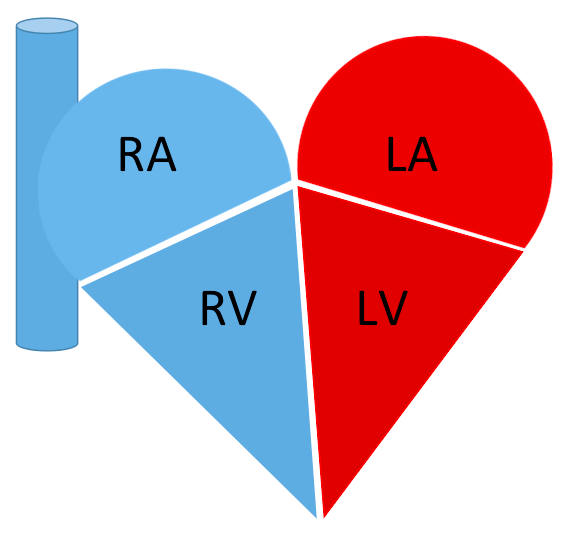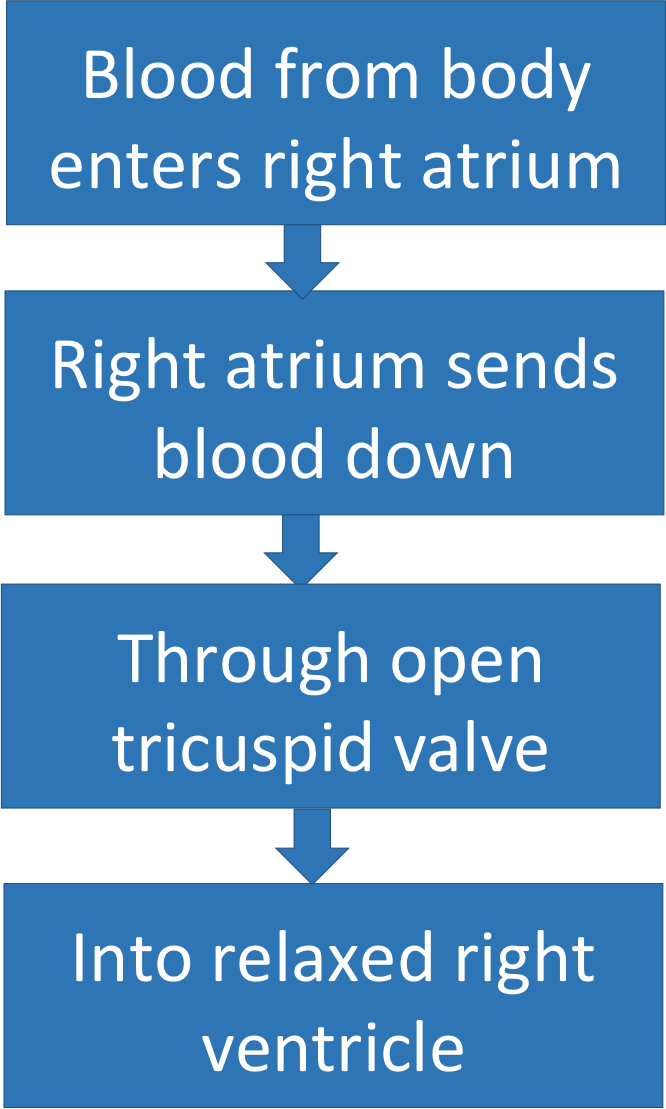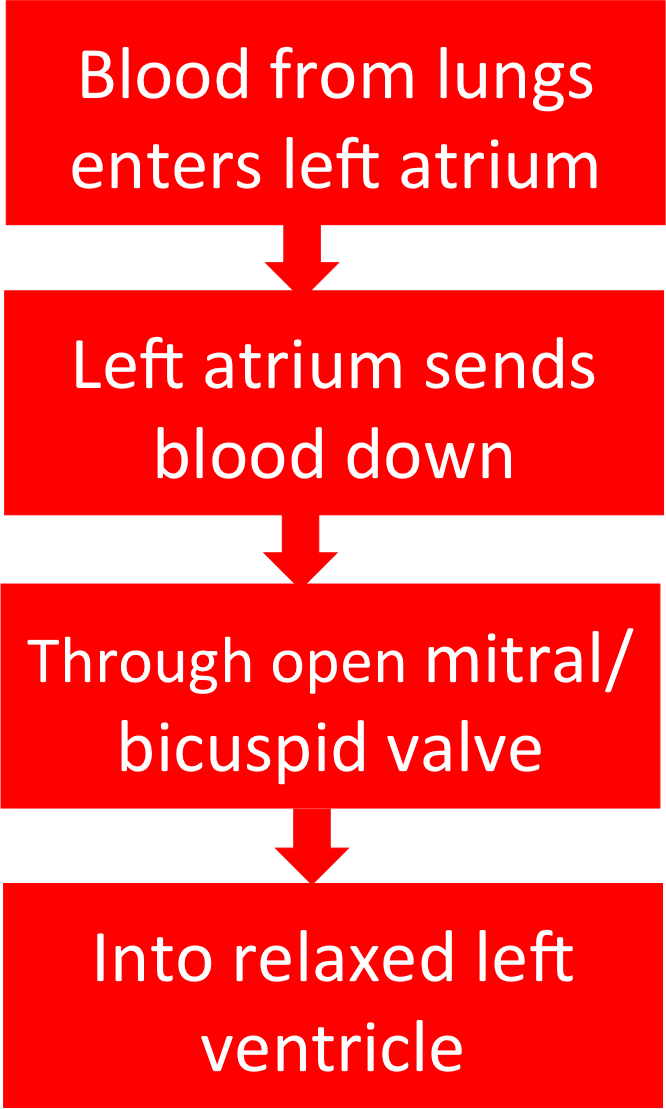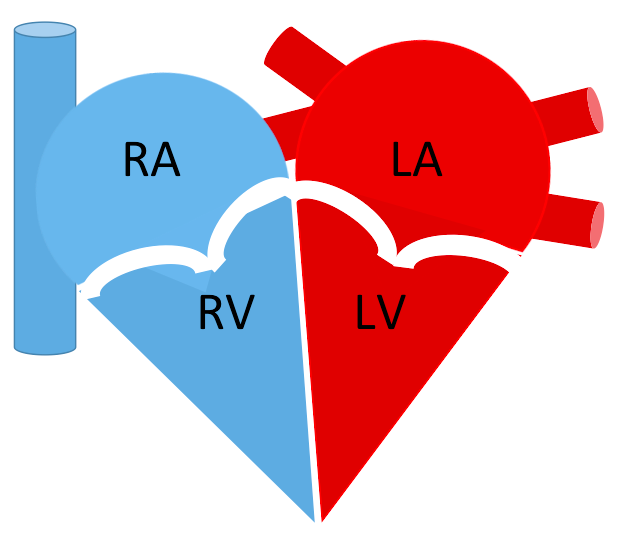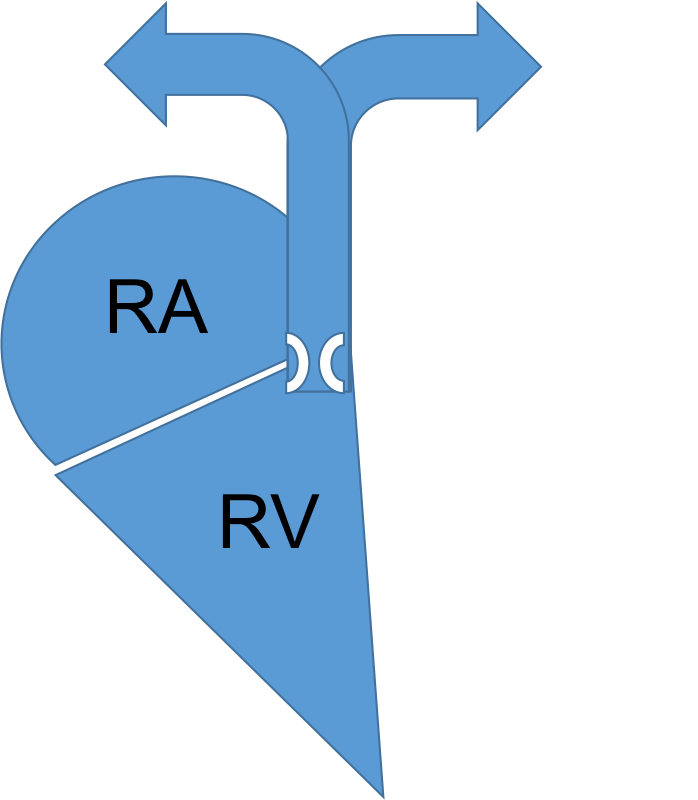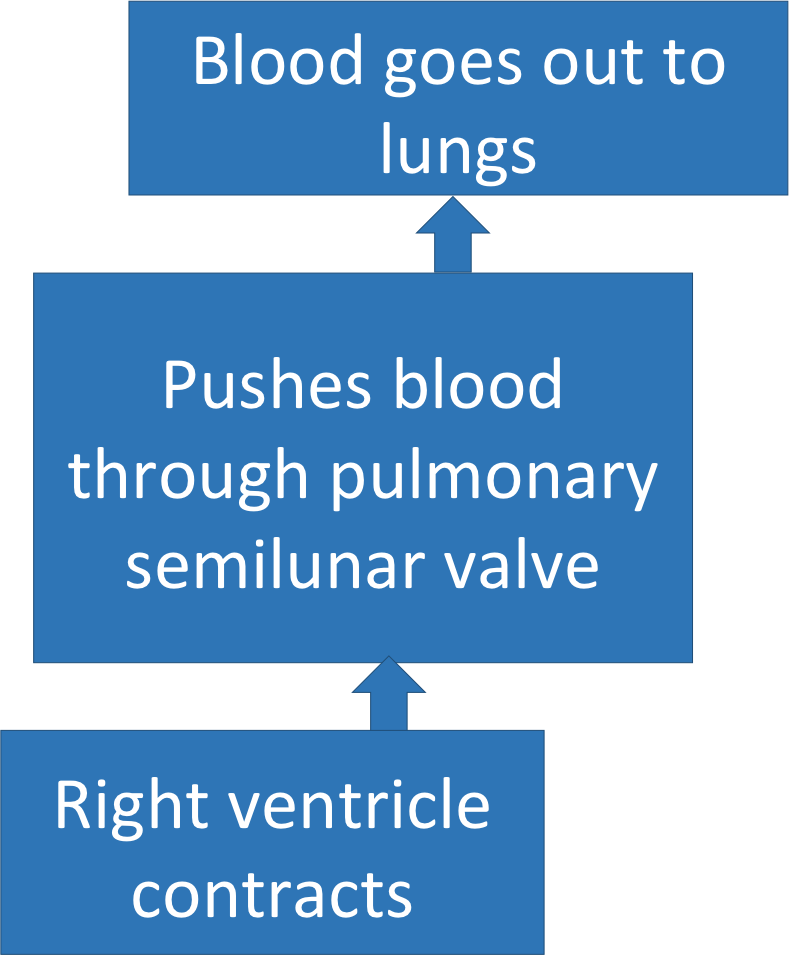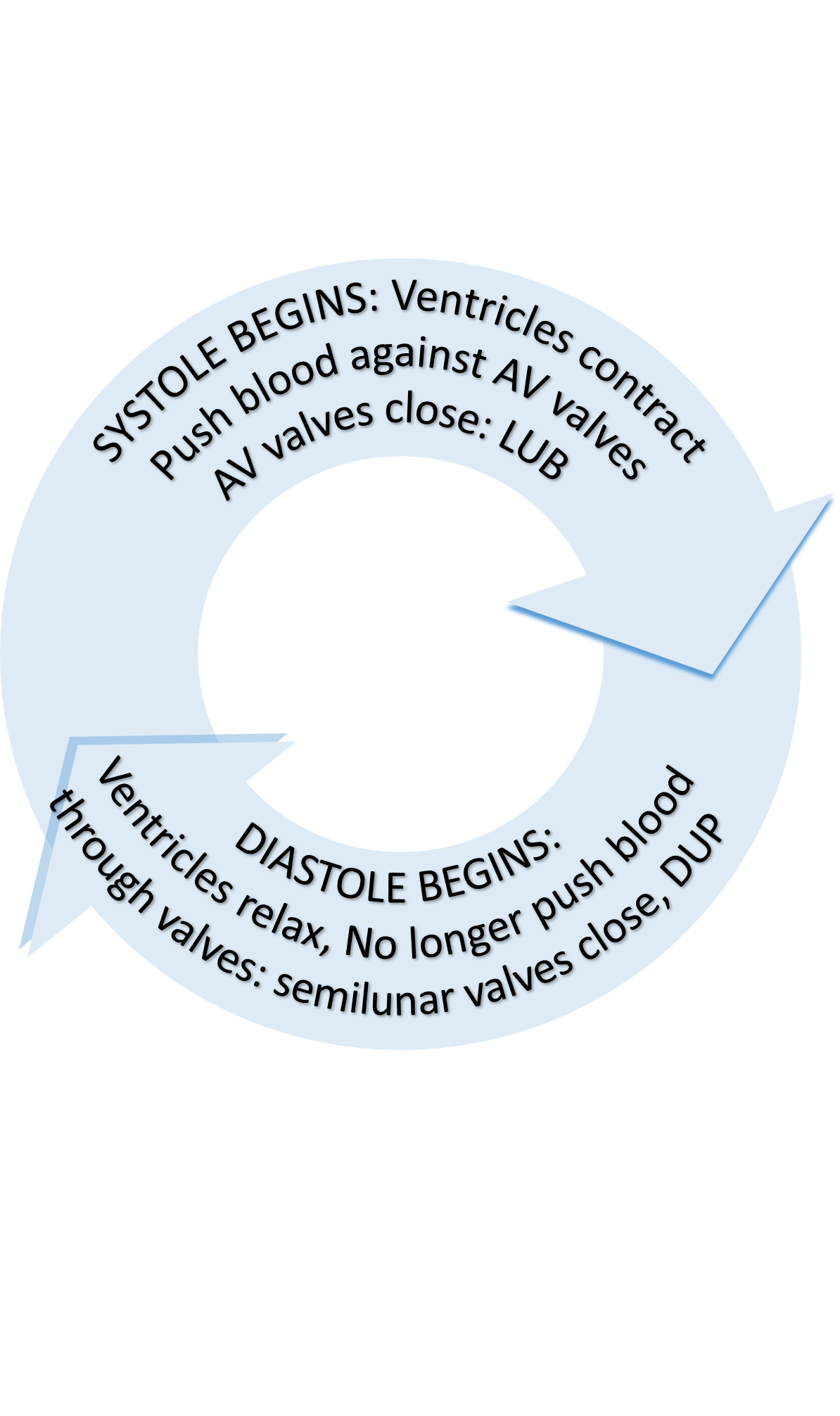This tutorial will review the cardiac cycle - where blood goes during a heartbeat.
You can navigate through this tutorial using the buttons at the top of the screen.
The tutorial will ask you questions. Click on your chosen answer to see feedback; click the answer again to make the feedback disappear. When you're finished with one page, click the navigation button for the next page to move ahead.
Before you jump in, do the questions below to remind yourself about the path of blood flow. Choose the right answer from each sentence.
Now you're ready to go on and send the blood through the heart!
Page 2
NEW TERM ALERT!
This period when the heart is relaxed is called
DIASTOLE
If you measured blood pressure out in the body during this period, it would be low because the heart isn't pushing any blood into the arteries. That is the lower of the two numbers in your blood pressure, and is called the
DIASTOLIC BLOOD PRESSURE
Here's another important term: the blood entering your heart during this period is called the heart's
PRELOAD
Pre means 'before'; the heart is loading up with blood before it will contract and pump the blood out. As you can imagine, the heart needs a good preload in order to pump enough blood to your tissues.
Page 3
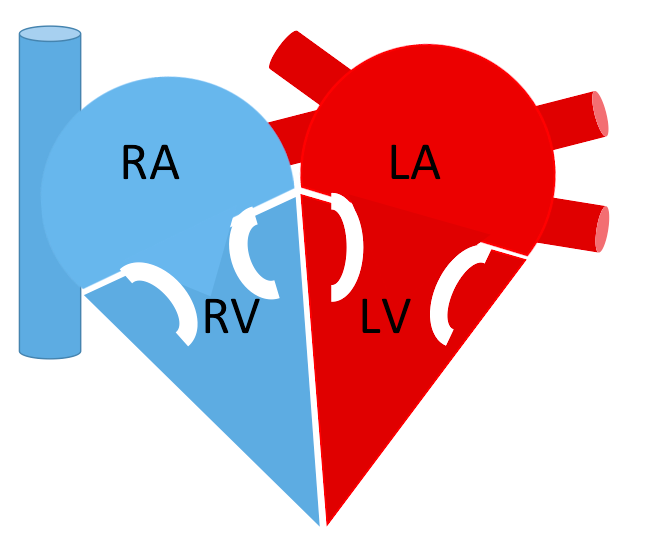
A combination of gravity and pressure from the atria pushes blood down into the ventricles. To get there, it must pass through the atrioventricular valves.
The right AV valve is the
bicuspid
tricuspid
mitral
and the left AV valve is the
bicuspid
tricuspid
mitral
Page 4
What's the term for the blood entering the relaxed ventricles again?
venous
cardiac output
preload
Page 5
When the ventricles contract, they push blood back up toward the atria. The blood doesn't go into the atria, though, because it pushes on the leaflets of the atrioventricular valves and closes them.
The AV valves' closing causes the:
first heart sound
QRS complex on the EKG
cardiac output
Page 6
Because the AV valves close, blood can't go back up into the atria. But the ventricles are contracting, so it has to go somewhere! It pushes through the semilunar valves into the big arteries leaving the heart - the pulmonary trunk leaving from the right ventricle, and the aorta leaving from the left ventricle.
NEW TERM ALERT!
This period when the ventricles are contracting is called
SYSTOLE
If you measured blood pressure out in the body during this period, it would be high because the heart is pushing blood into the arteries. That is the higher of the two numbers in your blood pressure, and is called the
SYSTOLIC BLOOD PRESSURE
The ventricles are not strong enough to push all of the preload out into the arteries. They only push a fraction of it out (about 60%), and this is called the
EJECTION FRACTION
Why can't the ventricles push out all the blood? Mainly because the arteries are already full of blood, and to push more into them the heart has to push that blood on into smaller vessels. It's hard to push blood through those tiny vessels. When we're focused on the blood vessels we call this the
SYSTEMIC VASCULAR RESISTANCE
or
PERIPHERAL RESISTANCE
When we're focused on the heart, we call it the
AFTERLOAD
because the heart experiences it as workload
after it begins contracting.
Page 7
Notice that the arrows in these flow charts point up. That's because the big arteries come out of the
tops of the ventricles, so ventricles have to push the blood
up through them. They have to fight both gravity and systemic vascular resistance to move the blood.
As long as the ventricles are contracting, they will keep pushing blood up through the semilunar valves and into the arteries.
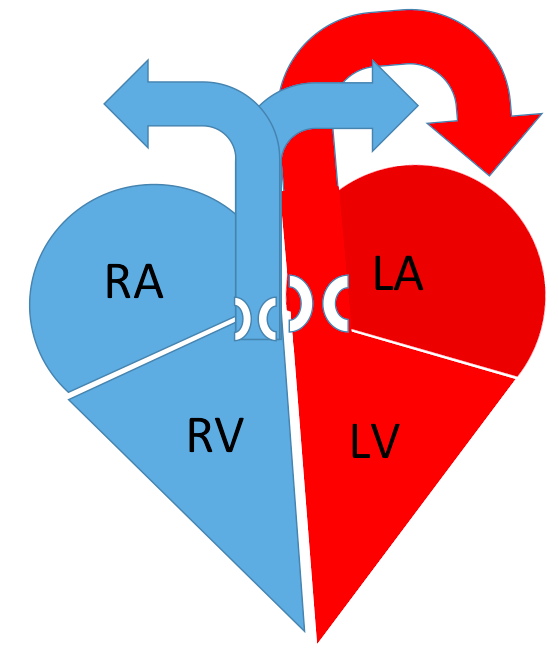
Eventually, though, the ventricular muscle cells finish contracting, repolarize, and go back to a resting state. Then blood is not being pushed through the semilunar valves any more. In fact, gravity pulls the blood down against those valves, and they close.

What will happen when the semilunar valves close?
systole
diastole
the second heart sound, DUP
Page 8
Notice that the arrows in these flow charts are empty. That's because ventricles have relaxed, and there is no blood being pumped up through the semilunar valves.
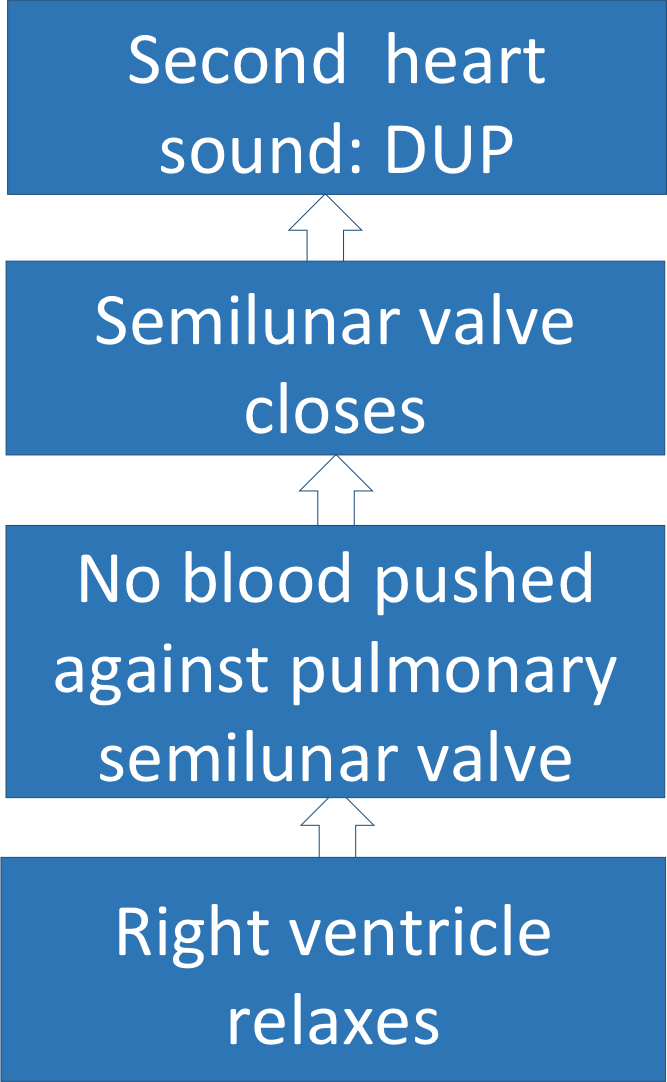
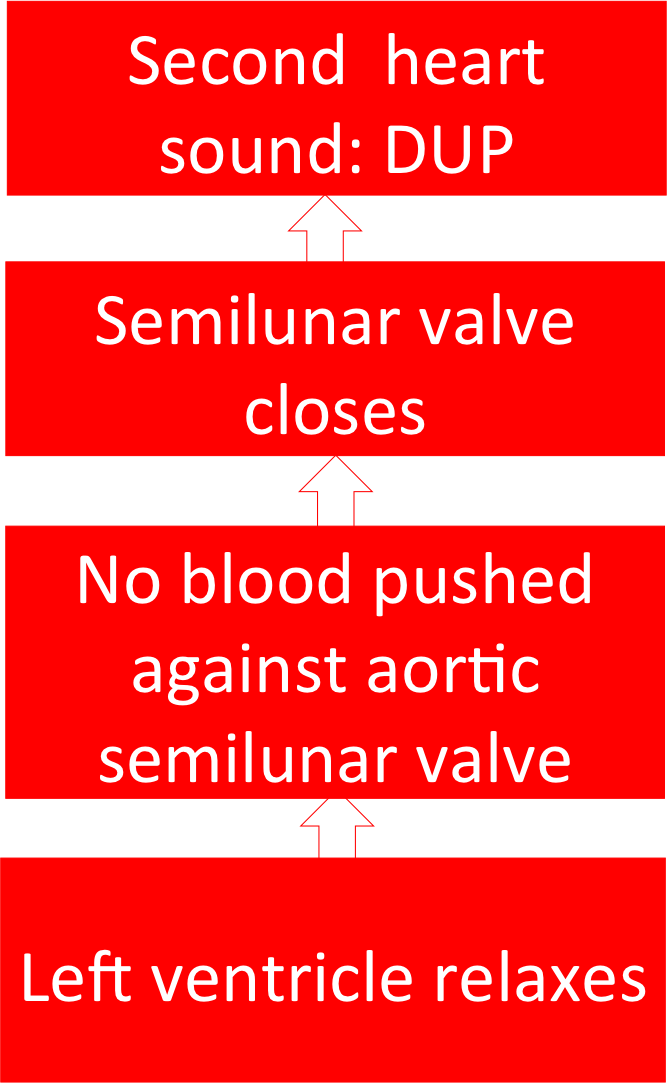
See if you can fill in the right words in this summary of the cardiac cycle:
When the ventricles are relaxed, the heart is in systole /
diastole.
The ventricles are filling with blood, which makes up the preload /
afterload.
Blood flows from the atria down into the ventricles through the atrioventricular /
semilunar valves.
When the ventricles start to contract, systole /
diastole begins. Blood pushed up against the atrioventricular valves closes them, causing the first /
second heart sound, DUP /
LUB.
As the ventricles continue contracting, blood is forced out through the atrioventricular /
semilunar valves into the arteries /
veins.
This can be hard to do because the vessels are already full, causing compliance /
resistance to taking in more blood. This creates a workload on the heart that is called its afterload /
preload. Because of this, the ventricles aren't able to pump out all the blood they contain. The part they do pump out is called the cardiac output /
ejection fraction.
When the blood is pushed out into the arteries, you measure the systolic /
diastolic blood pressure.
Once the ventricles have finished contracting, they relax and the heart re-enters systole /
diastole. Blood is no longer forced through the semilunar valves, but flows back down the arteries toward the ventricle, pushing those valves shut. When the semilunar valves close, it causes the first /
second heart sound, DUP /
LUB.
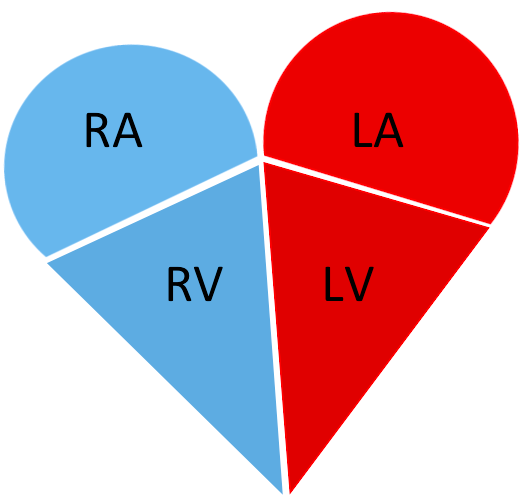 On each side of the heart, blood is collected in a chamber called an
atrium /
ventricle /
vein.
On each side of the heart, blood is collected in a chamber called an
atrium /
ventricle /
vein.